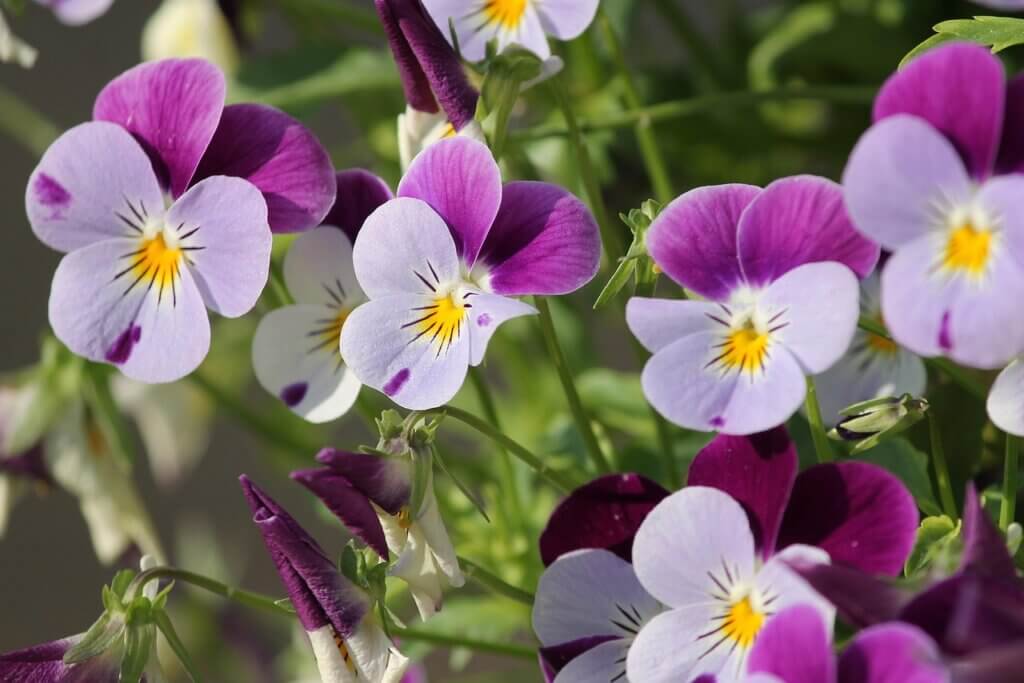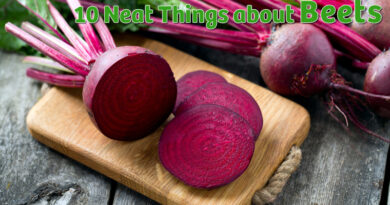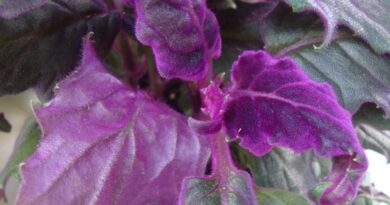Pansies: more than a pretty face
Pansies are a springtime staple, charming gardeners with their cheerful blooms and rainbow colours. But behind those sweet “faces” lies a fascinating backstory full of horticultural innovation, botanical quirks, and even a touch of history. Whether you’re planting up a container or filling a garden bed, these tough little flowers deserve a closer look. Here are 10 neat things you might not know about pansies.
1. Pansies love the cold.
Unlike many annuals, pansies thrive in chilly weather. In fact, their colours often become more vibrant in cool temperatures, and they can survive light frosts without a problem. That makes them ideal for early spring and late fall plantings. In milder climates pansies can even bloom through the winter.

2. Pansies are secret biennials.
Wild pansies are true biennials: foliage one year, flowers the next. But modern hybrids are bred to bloom fast, sometimes just nine weeks from seed. These modern pansies would, theoretically, overwinter above Zone 5, but I never had any live to see a second year when I gardened in Toronto.

3. They have a unique petal arrangement.
Pansies are distinguished by their petal configuration: two upper petals, two side petals, and a single bottom petal. This structure sets them apart from their Viola relatives, which typically have a different petal arrangement. It also affects how pollinators interact with the flower. The flower offers a landing platform with its wide lower petal.

4. Sweet smellers.
While many modern pansies are scentless, breeders have been returning to fragrance as desirable. Some varieties, especially smaller-flowered types and those in yellow or blue shades, have been selected for their soft, sweet scent. It’s most noticeable in the early morning or evening, and it adds a lovely bonus to containers placed near where you sit or stroll. Look for cultivars in the‘Penny’ series or with Viola cornutain the parentage if fragrance is what you’re after.Click here to read more about scent in the garden.

5. The origin of modern pansies.
Modern pansies (Viola × wittrockiana) are not just simple hybrids; they result from intricate crossbreeding among several Viola species, including Viola tricolor (wild pansy), Viola lutea, and Viola altaica. This diverse lineage contributes to their wide range of colours and patterns. The first intentional hybrids appeared in the early 1800s, and by 1835 there were more than 400 named varieties. Today, of course, there are many more.

6. Swiss Giants are heirlooms with oversized blooms.
Bred in Switzerland over a century ago, Swiss Giants were among the first pansies with truly large flowers—up to 10 cm across. Their bold colours and classic “faces” helped define the modern pansy look. Though newer varieties are more compact, Swiss Giants remain garden favourites for their nostalgic charm and strong spring performance. They’re proof that sometimes the originals still hold their own.

7. Ruffles in the garden.
‘Frizzle Sizzle’ pansies from Proven Winners are celebrated for their frilly, ruffled petals, which become even more pronounced in cooler temperatures. Available in a range of vibrant colours, including ‘Blue’, ‘Lemonberry’, ‘Burgundy’, and ‘Orange’, they add a unique texture and visual interest to containers and garden beds. Their compact, mounded habit makes them ideal for close-up viewing in containers or along garden borders. Notably, the ruffling intensifies in cool conditions, enhancing their ornamental appeal during spring and fall plantings.

8. Cool Wave pansies trail.
Unlike traditional upright pansies, Cool Waves were bred to sprawl and spill—making them perfect for hanging baskets, window boxes, and colourful edging. They form a low, spreading mat that can reach up to two feet across, and they keep blooming like mad from early spring to frost. Bonus: they bounce back in fall if trimmed after summer heat, and in warmer zones, they might even overwinter and bloom again.

9. Pansy has many meanings.
Historically, “pansy” has been used as a slang term, particularly in the early 20th century, to describe men considered effeminate. Before that, it came from the French pensée, meaning “thought”, because the nodding flower with its face looks deep in thought. In Victorian floriography, they symbolized thoughtfulness and admiration.

10. You can eat them (sort of).
Pansy petals are edible and often used as a garnish in salads, cakes, and cocktails. They have a mild, slightly grassy flavour and add instant charm to springtime dishes. Just make sure they’re grown without pesticides or other sprays. Supermarket or garden centre pansies are usually not food-safe unless labelled otherwise.Click here for more flowers you can eat.








